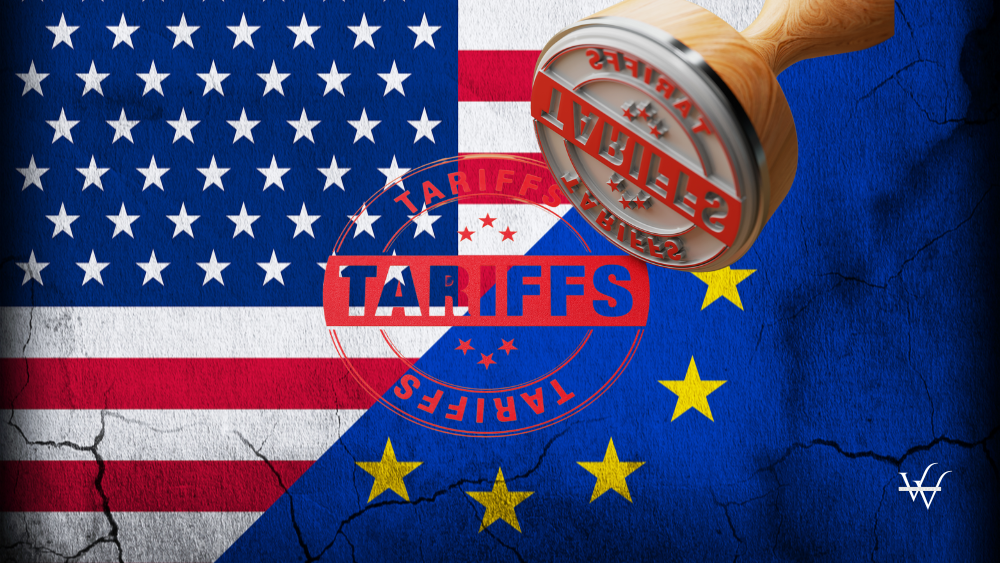In a significant escalation of trade tensions, U.S. President Donald Trump announced the implementation of new "reciprocal" tariffs, including a 20% duty on all European goods such as wine, spirits, and other agri-food products.
These tariffs, effective from April 2, 2025, are part of an executive order aimed at countering what Trump described as unfair trade practices by the European Union and other trading partners.
New Tariffs and Their Scope
The newly imposed tariffs reflect a partial retreat from the previously threatened 200% duties on wine and spirits. However, the 20% duty still represents a substantial burden on European producers, particularly in countries like Italy and France, which have historically benefited from zero-duty exports to the U.S.
Trump justified the move by highlighting trade imbalances, stating that Europe imposes an average tariff of 39% on American goods, while the U.S. has historically maintained significantly lower rates. Under the new policy, "reciprocal" duties will apply to a broad range of imports:
- 20% tariff on all European goods, including wine and agri-food products.
- 25% tariff on all foreign-produced cars.
- Tariffs on products from Australia, New Zealand, Argentina, Brazil, and Chile, ranging from 10% to 20%.
- A 34% tariff on Chinese imports, counterbalancing the 67% tariff China imposes on U.S. goods.
At a press conference in the White House Rose Garden, Trump framed these tariffs as an effort to reclaim American economic independence:
"They have robbed us, plundered us, and stolen the American dream. Today, we take back our destiny and make America rich again."
The former president claimed that the move would drive investment back into the U.S., citing planned corporate investments amounting to USD 6 trillion.
Industry Response: Wine Sector Sounds the Alarm
The European wine and spirits industry reacted with alarm, warning of severe economic repercussions. Marzia Varvaglione, president of the Comité Européen des Entreprises Vins (CEEV), which represents EU wine companies, stated:
"The reciprocal tariffs announced on EU wines will severely damage European wine companies, creating economic uncertainty, layoffs, deferred investments, and price hikes. Targeting EU wine will only lead to losses on both sides of the Atlantic."
The U.S. is the largest export market for European wine, with no alternative market capable of absorbing the potential loss. Ignacio Sánchez Recarte, Secretary General of CEEV, emphasized:
"The transatlantic wine trade has been built on cooperation and open markets. This new tariff system is unjustified and ignores the minimal difference between EU and U.S. tariffs on wine. We call for a diplomatic solution."
Impact on Italian and French Wine Exports
Italy and France, the leading European wine exporters, are set to bear the brunt of these tariffs. Italian wine exports to the U.S. amounted to EUR 1.9 billion in 2024, a figure now in jeopardy. Federvini, the Italian wine and spirits association, expressed deep concern over the move, stating:
"This decision marks a serious step backward in international trade principles. Past tariffs have led to a 50% drop in U.S. exports, and we now risk reliving that economic trauma."
Beyond wine, the Parmigiano Reggiano Consortium also acknowledged the impact, as duties on its cheese exports will rise from 15% to 35%. However, Consortium President Nicola Bertinelli struck a more measured tone, arguing that while price increases might not drastically reduce demand for premium products, they create unnecessary strain on consumers and businesses alike.
Macroeconomic Ramifications
The financial markets reacted immediately. Following Trump’s announcement, the euro rose against the dollar, trading at USD 1.09, up from USD 1.0840, while U.S. Treasury bond yields increased due to a selloff in government securities.
Coldiretti, the Italian farmers' association, estimates that the 20% tariff will result in a EUR 1.6 billion cost increase for American consumers, leading to a decline in sales and an increase in the phenomenon of "Italian sounding" products—counterfeit or misleadingly labeled Italian-style goods.
What Comes Next?
As European governments and trade organizations scramble to respond, pressure mounts on the European Commission to negotiate a resolution. With EUR 1.6 trillion in transatlantic trade at stake, the coming weeks will determine whether diplomacy prevails or if businesses and consumers on both sides of the Atlantic will face lasting economic repercussions.
Source: WineNews

